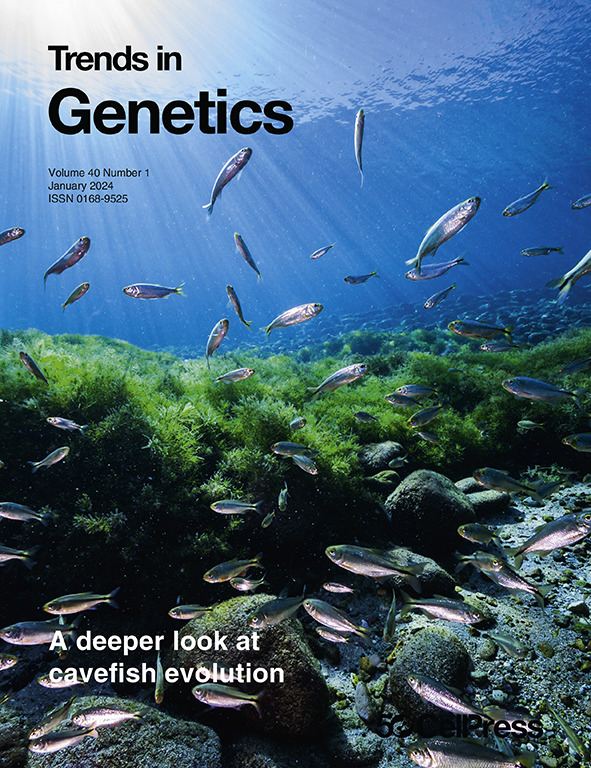海洋无脊椎动物对热液喷口生境的遗传适应性
IF 13.6
2区 生物学
Q1 GENETICS & HEREDITY
引用次数: 0
摘要
与典型的深海软沉积环境相比,热液喷口是一种独特的栖息地,就像生命的绿洲。生活在这些栖息地的大多数动物都是无脊椎动物,它们已经适应了包括高温、缺氧、高硫化物、高金属浓度和黑暗在内的极端喷口环境。下一代测序技术的出现,尤其是新的omics时代的到来,使更多的研究得以关注这些无脊椎动物对喷口栖息地的分子适应性。许多与热液适应有关的基因都得到了研究。我们总结了与这些基因适应有关的研究结果,并讨论了哪些新技术可以促进未来的研究。本文章由计算机程序翻译,如有差异,请以英文原文为准。
Genetic adaptations of marine invertebrates to hydrothermal vent habitats
Hydrothermal vents are unique habitats like an oases of life compared with typical deep-sea, soft-sediment environments. Most animals that live in these habitats are invertebrates, and they have adapted to extreme vent environments that include high temperatures, hypoxia, high sulfide, high metal concentration, and darkness. The advent of next-generation sequencing technology, especially the coming of the new era of omics, allowed more studies to focus on the molecular adaptation of these invertebrates to vent habitats. Many genes linked to hydrothermal adaptation have been studied. We summarize the findings related to these genetic adaptations and discuss which new techniques can facilitate studies in the future.
求助全文
通过发布文献求助,成功后即可免费获取论文全文。
去求助
来源期刊

Trends in Genetics
生物-遗传学
CiteScore
20.90
自引率
0.90%
发文量
160
审稿时长
6-12 weeks
期刊介绍:
Launched in 1985, Trends in Genetics swiftly established itself as a "must-read" for geneticists, offering concise, accessible articles covering a spectrum of topics from developmental biology to evolution. This reputation endures, making TiG a cherished resource in the genetic research community. While evolving with the field, the journal now embraces new areas like genomics, epigenetics, and computational genetics, alongside its continued coverage of traditional subjects such as transcriptional regulation, population genetics, and chromosome biology.
Despite expanding its scope, the core objective of TiG remains steadfast: to furnish researchers and students with high-quality, innovative reviews, commentaries, and discussions, fostering an appreciation for advances in genetic research. Each issue of TiG presents lively and up-to-date Reviews and Opinions, alongside shorter articles like Science & Society and Spotlight pieces. Invited from leading researchers, Reviews objectively chronicle recent developments, Opinions provide a forum for debate and hypothesis, and shorter articles explore the intersection of genetics with science and policy, as well as emerging ideas in the field. All articles undergo rigorous peer-review.
 求助内容:
求助内容: 应助结果提醒方式:
应助结果提醒方式:


